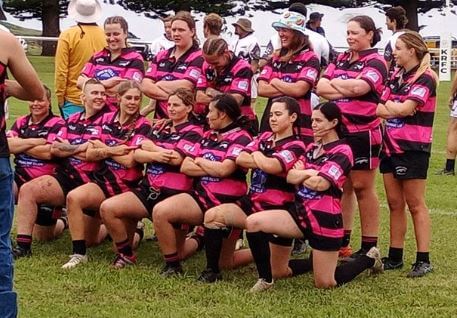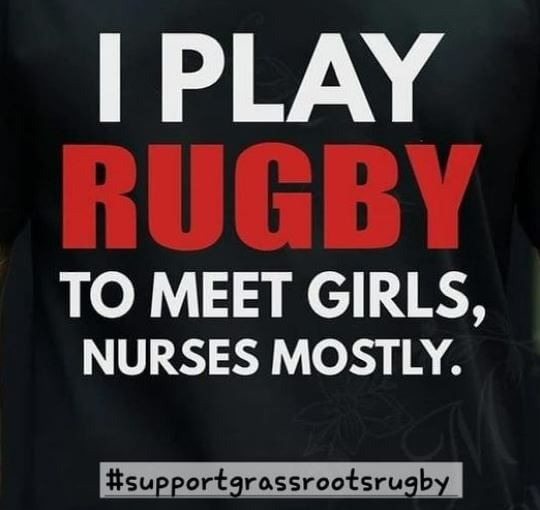Good Morning Cobbers,
I hope we’re all fighting fit, primed and pumped, rippa rita’d and ready to rock and roll.
Again, here’s the usual reminder that we are a fan-run volunteer site and all are welcome to make a contribution. You can email me directly if you wish at nutta@greenandgoldrugby.com.au or you can use this LINK from the homepage to give us your contribution. We genuinely welcome it as fresh voices and perspectives are so valuable to our game.

I’m going to sound like such an old man in what I write today. It’s going to be very easy for a critic to dismiss my thoughts as the idiotic, uninformed ramblings of a cranky old galoot who’s just trying to say ‘It was tougher in my day…’ I guess it’s like that half-drunk uncle at Christmas lunch who says “I’m not racist, but…”. So I’m ready for the slings and arrows. But nonetheless, today I’m going to talk about being mindful of over-reaction to the brain injury sensitivities that are enveloping our game right now.
Up front I say that I get we’re in a new world when it comes to head injury. And I applaud that we recognise it and respond to it appropriately.
We now play a game that is deliberately engineered to be played faster and more openly than ever before. And concurrently, with professionalism alongside the societal lift in gym culture in recent years, we also now have larger, heavier players in the game. So we have a faster game played by bigger folk. Therefore the kinetic energy loads of the hits in our game are getting bigger, even at park-level footy. So rational steps must be taken to adapt to that.
To that we add that we are now increasingly aware of the dangers of head trauma. More than ever before, we are now better aware of the implications of not just isolated incidents of head trauma, but also the cumulative dangers posed by prolonged exposure to head knocks, especially within heavy contact sports such as ours.
In response to that, we now see different ways to measure impacts on the head and brain across a match, a season and a career. And we’ve also listened to how collating such information in both real time, but also over prolonged time, facilitates better understanding and thus care, treatment and minimisation of injury.

Thus it has only been a matter of time (aided by lawsuits) until theory became applied science and our game started to see technology come to assist match staff with head injury assessments. And this is to be applauded. I genuinely don’t think there is any rational person anywhere in our game who will honestly say that the increasing focus in recent years on player safety and welfare as it relates to head/brain trauma is ill-founded or illogical.
Here comes the “I’m not racist” bit. But, I do think we need to be careful about the swing of the pendulum. I think we need to give careful consideration to take measured, logical steps that are actually effective. And, above all, I think we really need to not be over-reactive and in doing so be blind to the unintended consequences triggered by some sort of altruistic adherence to the purity of an idea rather than its pragmatic outcomes.
My fear is that, in a scramble to respond with anything, those that govern our game are beginning to advocate a response based on divorcing the human from the decision. They are overly relying on relatively unproven technology to make decisions for us. This move to a ‘computer says no’ footing is, understandably, likely rooted in a defensive reaction to the duty of care lawsuits in the UK of recent times. But nonetheless, it is a flawed reaction. Why? Because as I said in a comment last week, reliance on a hard ‘line in sand’ approach over more nuanced human thinking fails to recognise and account for the inherent differences between folk, in this case how different ‘knocks’ impact different people. Thus the rigid application of ‘some/any sort of science’, regardless of its fit to a situation, is leading to erroneous decisions that will damage the game itself.
What the hell am I talking about?
As reported by Hoss last Friday, a practical example of this has been the imposition of ‘smart mouthguards’ (aka “instrumented mouthguards” or IMGs) into the Super Rugby Pacific competition in parallel with the 6 Nations and (apparently) all other major rugby competitions world wide as of this year.

These mouthguards, being literally inside the noggin, are fitted with impact-measuring instrumentation that is bluetooth hooked to sideline observers. The basic principle is that head knocks experienced above designated kinetic thresholds trigger a signal and so report back ‘cold, hard fact in real time’ to folk on the touchline who then call for a player to be assessed. That all sounds pretty good. But do they work? I suggest the evidence shows they don’t.
On the weekend just passed, we saw a cracking game of rugby wherein the Waikato Chiefs took on the Canterbury Crusaders. And we also saw the IMG play a significant and contentious role.
Firstly, at 14min with scores locked at 3-all and the Crusaders about to defend a Chiefs attacking lineout on about the Crusaders quarter, we saw Crusaders lock Quentin Strange summonsed off field for an IMG-initiated head check. At a critical time, a critical player was removed from the field. For those of us watching, young Quentin was clearly fine. But nonetheless, off he went. And guess what? Back he dutifully came after he was cleared.
Then again, at 75min with the Chiefs down by 27-29 but hard on attack, we saw a senior Chiefs player (70 odd test All Black Anton Lienert-Brown) similarly IMG-summonsed from the field. Again, this was a player who was visibly clearly fine. And I was careful to pay attention to post match reports to confirm that the assessment found nothing, as indeed he was fine.
In isolation, these two clearly inappropriate interventions into the game, to critical players at critical junctures, were exactly the sort of machine-reliant, over-reactions I am worried about.

But it gets worse. Contrary to the direct interference we saw in NZ, completely different standards were at play in Perth when the Force played the Canes. Specifically, Force prop Marley Pearce broke his nose in a face-up ‘tackle gone wrong’ with Canes Jordie Barrett. Yet, while that contact was no doubt severe (good enough to break Pearce’s nose) and was considered so bad on review that Pearce ‘ate cheese’ by the tackle protocol (correctly), neither Pearce nor Jordy Barrett were IMG-triggered for an HIA. Really? Were these guys IMGs not hooked up and being measured? Or were the thresholds/triggers being applied with different settings? Or did the IMGs just not work? Frankly, I’m not sure which answer is worse. But it needs to be explained for credibility’s sake if nothing else.
My point is that if we are going to allow these advances to have the power to be so interfering into the very game itself, then we bloody well need to make sure such interference is on good ground. Given the two guys who got yanked in the Crusaders/Chiefs match were clearly fine, while the same technology in the Force/Canes match didn’t even trigger a review into impacts that were substantive enough to break noses and issue yellow cards, then I would suggest that at least for credibility’s sake, the use of IMGs is long way from resolved.
So, in my opinion, the IMG should be immediately sidelined until its use and outcomes are at least vaguely and defensibly consistent, to say nothing of the simple fact that such tools must not be the first and final say, nor take the place of a human assessment. I say this not because I want to prevent a sensible, practical measure to an obvious issue for our game, but because I want that measure to be credible, sustainable and to actually work.
I’ll ask it a different way: imagine if Handre Pollard had been yanked off field by an IMG report in the World Cup Final?

Nutta’s Aussie Team of the Week – week 1
As long as you play for an Aussie team in the Super competition, then you’re eligible.
- Angus Bell – he is just getting better
- Matt Faessler – two pies topped a cracker game
- Taniela Tupou – came off the bench, but was the best of an ordinary group of 3s
- Jed Holloway – graft and craft
- Miles Amatosero – great debut and clearly has ability
- L. Salakaia-Loto – reminded us all how mobile and enormous he is
- Luke Reimer – with approx 15 tackles and 4 steals he was undeniable
- Harry Wilson – direct, effective and ate metres like chocolates
- Ryan Lonergan – Tate McD was ‘busy’, but Ryan was accurate
- Noah Lolesio – so he’s not flashy, but damn he’s effective
- Corey Toole – pure speed
- Len Ikitau – earned a spot but was pushed into 12
- Josh Flook – how he was left behind from France still puzzles me
- Dylan Pietsch – took his chances and snagged a freaky try
- Andrew Kellaway – maturing well
- Theo Fourie – mostly because every other hooker just couldn’t throw
- James Slipper – graft and craft from the timeless one
- Harry Johnson-Holmes – put in a solid shift
- Seru Uru – was everywhere and in everything
- Liam Wright – the modern Fardy of Aussie rugby
- Nic White – played well in a beaten side
- Tom Lynagh – clearly has ability
- Max Burey – the best in a well beaten Force side
Well there’s enough to chow down on for this week, mes amis. Pull your daggers, do your worst and give me your thoughts in the comments below.

